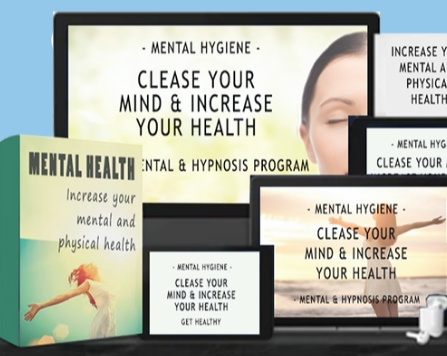Understanding the Connection Between Exercise and Depression
Introduction to Depression
Depression is more than just feeling sad. It’s a complex mental health disorder that affects a person’s emotions, behavior, and overall quality of life. Millions of people worldwide struggle with depression, facing symptoms that disrupt daily life.
Symptoms and Common Experiences
Symptoms of depression can vary but often include persistent sadness, loss of interest in activities, changes in appetite and sleep, fatigue, and feelings of hopelessness. These symptoms can make daily tasks challenging and impact a person’s ability to feel joy or satisfaction in life.

Causes of Depression
Depression is caused by a combination of genetic, environmental, and psychological factors. It may stem from stressful life events, traumatic experiences, or chemical imbalances in the brain. Understanding these causes is key to addressing depression effectively.
The Role of Exercise in Mental Health
Exercise is a well-recognized tool for maintaining physical health, but its effects on mental health are equally significant. Studies show that regular physical activity can reduce the risk of developing depression and ease symptoms in those already diagnosed.
How Exercise Impacts the Brain
Physical activity triggers the release of chemicals called endorphins—natural mood elevators. Exercise also promotes the release of serotonin and dopamine, which are neurotransmitters associated with happiness and pleasure. This biochemical process can help combat depressive feelings.

The Science Behind Exercise and Mood Regulation
Exercise helps regulate mood by reducing stress hormones like cortisol and promoting a more balanced mental state. It enhances blood flow to the brain, increasing energy levels, improving cognitive function, and making it easier to handle everyday stressors.
How Exercise Helps Alleviate Depression Symptoms
The Benefits of Exercise on Mental Health
Reduces Stress and Anxiety
Exercise acts as a natural stress-reliever. Physical activity reduces anxiety by promoting relaxation and reducing muscle tension. It provides a mental escape, giving people a chance to focus on something other than their worries.
Improves Sleep Quality
Quality sleep is essential for mental well-being, and exercise is known to improve sleep patterns. Regular activity helps regulate circadian rhythms, making it easier to fall asleep and enjoy deeper, more restorative rest.
Boosts Self-Esteem and Confidence
Exercise can improve body image, boost self-esteem, and provide a sense of accomplishment. Setting and achieving fitness goals can empower people, fostering a more positive self-image and encouraging a proactive approach to mental health.

How Different Types of Exercise Impact Depression
Aerobic Exercises and Their Effect on Mood
Aerobic exercises, such as running, swimming, and cycling, are particularly beneficial for mental health. They increase heart rate, improve oxygen circulation, and have been shown to boost mood significantly.
Strength Training and Self-Empowerment
Strength training doesn’t just build physical power; it also fosters mental resilience. Weightlifting and resistance exercises can increase confidence and self-worth, providing a tangible sense of progress.
Yoga and Mindfulness for Calmness and Clarity
Yoga combines physical postures with breathing exercises and mindfulness, helping to calm the mind and reduce stress. It is a gentle yet effective way to manage depressive symptoms and cultivate mental clarity.

Starting an Exercise Routine for Depression
Setting Realistic Goals
Beginning an exercise routine can be intimidating, especially for those dealing with depression. Setting small, achievable goals is essential for building a sustainable routine without overwhelming oneself.
Types of Beginner-Friendly Exercises
Walking and Jogging
These simple activities are accessible and don’t require special equipment. A daily walk or light jog outdoors can elevate mood by exposing people to fresh air and sunlight, both of which contribute to mental well-being.
Cycling and Swimming
Both cycling and swimming are gentle on the joints, making them ideal for beginners. These activities provide aerobic benefits and can be a relaxing way to stay active.
Simple Home Workouts
For those who prefer privacy, home workouts like bodyweight exercises, yoga, and stretching routines are excellent options. They’re convenient and can be tailored to individual fitness levels.

Overcoming Challenges in Maintaining an Exercise Routine
Maintaining an exercise routine can be difficult, especially when depression makes motivation scarce. Keeping a journal, enlisting the support of friends or family, and focusing on small achievements can help make it easier to stay committed.
Conclusion: Can Exercise Replace Other Depression Treatments?
The Role of Medication and Therapy
While exercise offers substantial mental health benefits, it may not be sufficient for everyone. Severe depression often requires a combination of treatments, including medication and therapy, to provide effective relief.
How Exercise Complements Other Treatments
Exercise works well alongside other treatments for depression. It enhances the effects of therapy by increasing mental resilience and improving mood, and it can reduce the need for higher doses of medication over time.
Final Thoughts
Exercise is not a cure-all, but it’s a powerful tool in managing depression. By incorporating regular physical activity into daily life, individuals can experience significant improvements in their mood, energy, and outlook.

FAQs
- Can exercise alone cure depression?
Exercise can significantly improve mood, but it may not be a cure for everyone. For severe depression, additional treatments like therapy and medication may be necessary. - How long does it take to see improvements in mood from exercise?
Many people notice mood improvements after a few weeks of consistent exercise, though individual results vary. - Are there specific exercises best for depression?
Aerobic exercises like running and cycling, along with yoga and mindfulness practices, are especially beneficial for reducing depressive symptoms. - How often should I exercise to manage depression?
For best results, aim for at least 3-5 sessions per week, even if they’re brief. Consistency matters more than duration. - Can exercise prevent depression?
Regular physical activity is associated with a lower risk of developing depression, though it doesn’t guarantee immunity. Exercise is just one part of a holistic approach to mental well-being.

Get the latest methods of mental coaching and hypnotherapy to effectively solve the 3 main causes of depression in the subconscious mind in 7 days and build up your emotional state: Click here to get access

